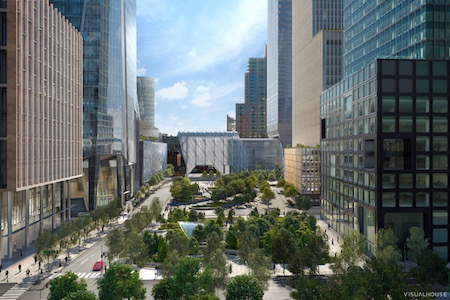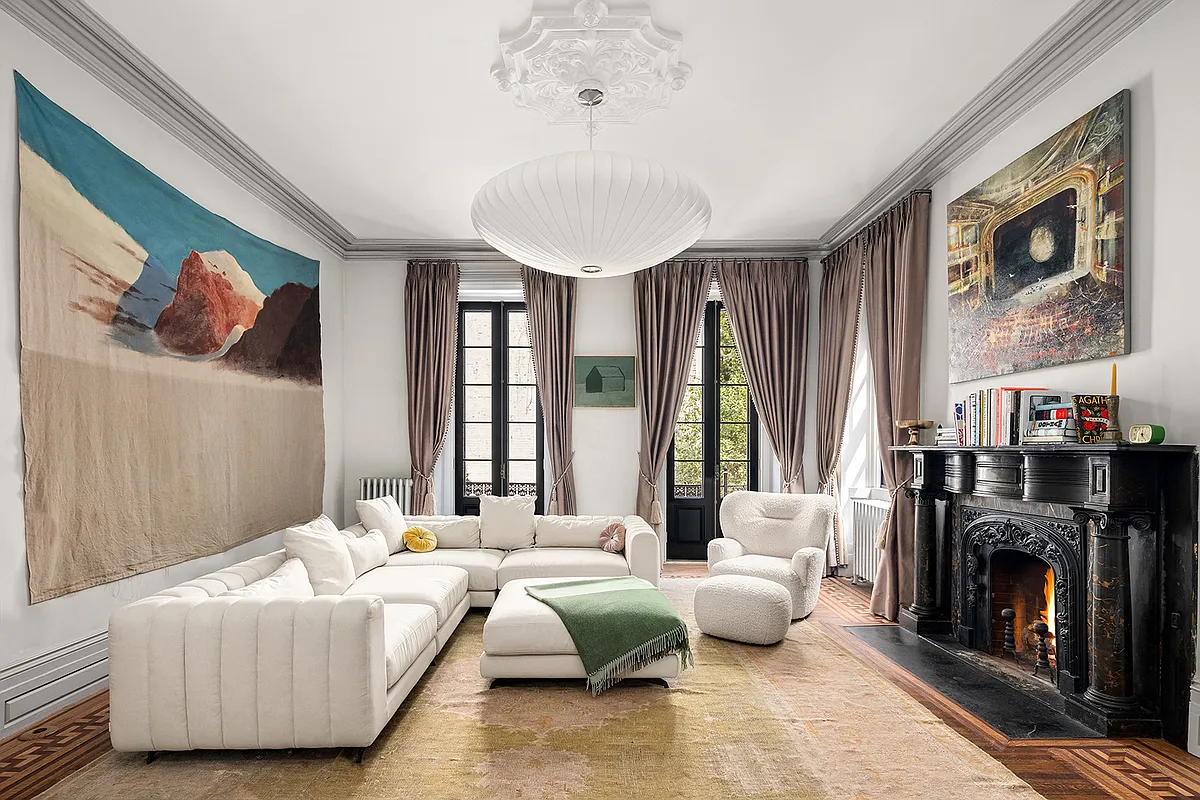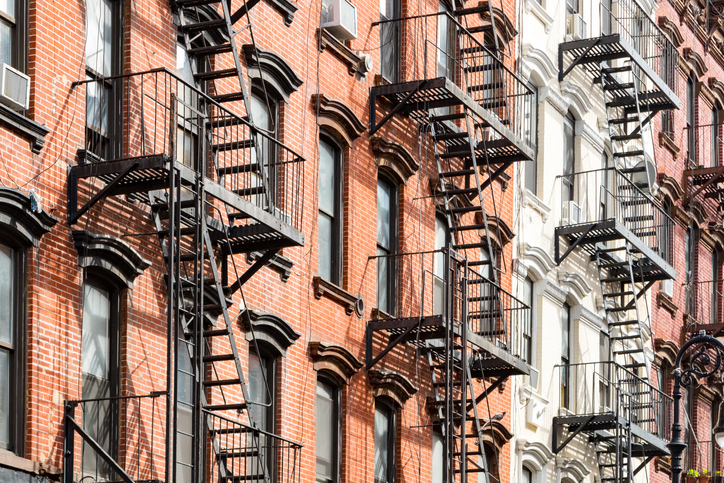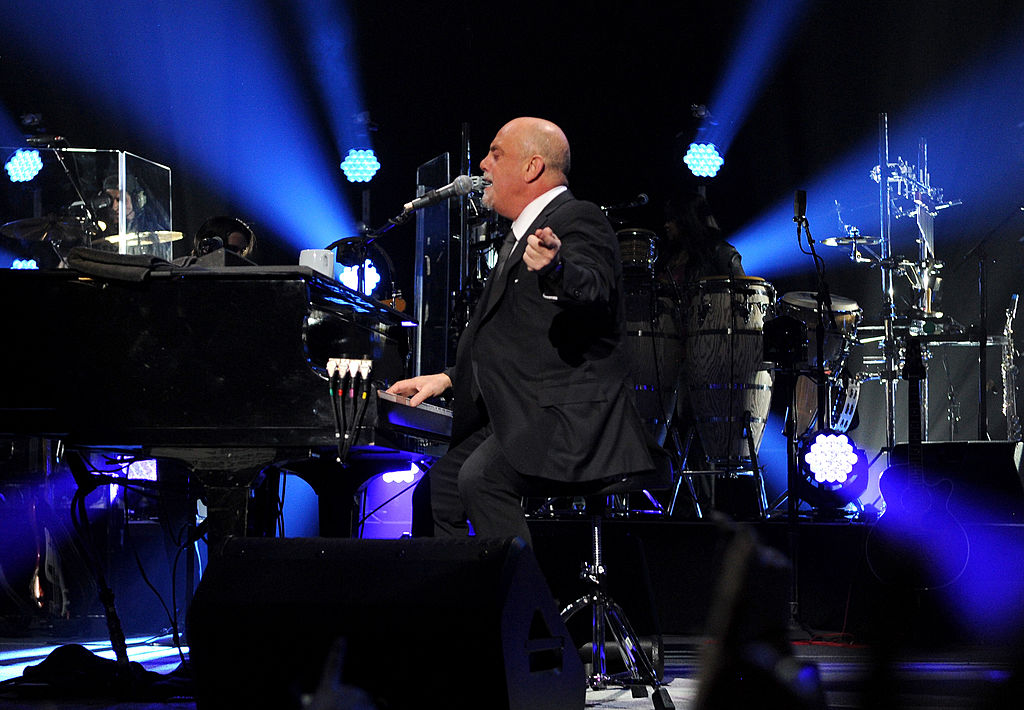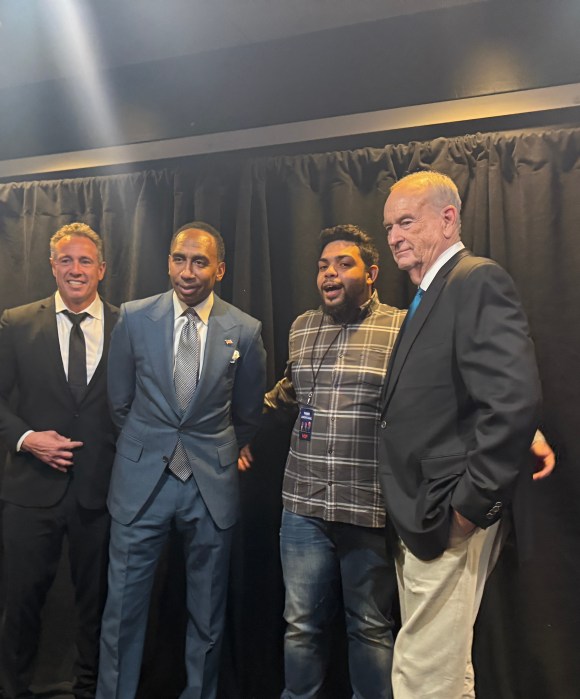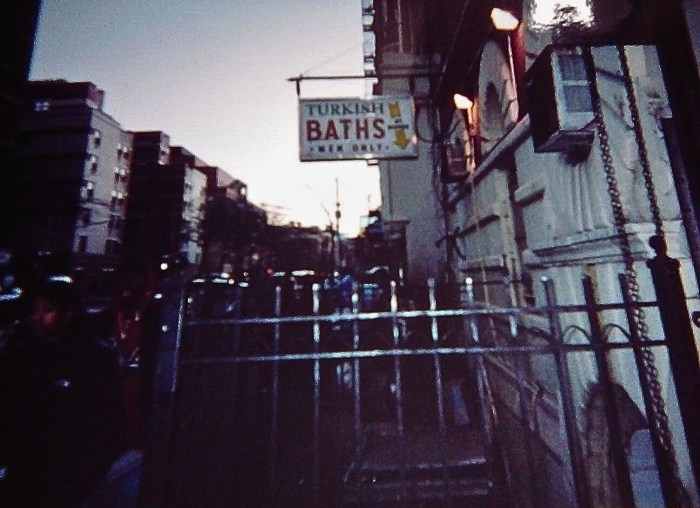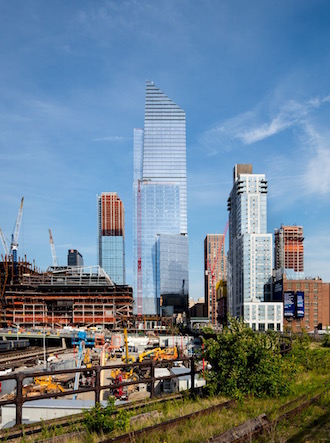
BY YANNIC RACK | Hudson Yards is finally open for business — or at least a part of it is.
On paper, it has been touted for years as an infrastructure marvel and a “city within a city,” and now the first piece of the megaproject has come to life.
Ten Hudson Yards, the first of many buildings rising in the newly created West Side enclave, officially opened this week with a reception to welcome its leading big-name tenant, Coach Inc., to the 52-story office tower at the corner of 30th Street and 10th Avenue.
“This is a great day for me,” said Stephen Ross, founder and chairman of Related Companies, which is developing the project with Oxford Properties. “In 2008 we envisioned what Hudson Yards might be, and to see this first building opening, I gotta tell you, it’s a very exciting thing.”
Ross added, “This is just a preview of what’s to come, but I think you can see the quality of what we’re doing here, and what our vision is.”
Ross was ringed by Coach employees in the building’s second-floor lobby on the morning of May 31, as workers in hard hats could be seen working on the platform that will shoulder an entire neighborhood — built atop active train yards — just outside.
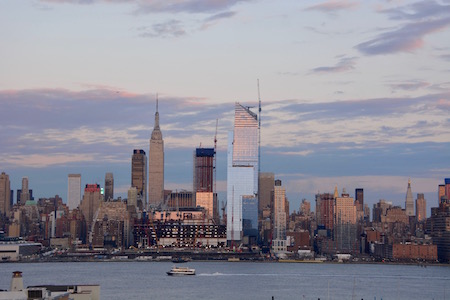
The tower broke ground in December 2012 and is the first one to open in the new 28-acre neighborhood.
Five more skyscrapers, a shopping and restaurant complex, a cultural center, and a six-acre public plaza will be added by 2019 alone, when the first phase of the project, from West 30th to West 34th Streets between 10th and 11th Avenues, is completed.
When fully occupied, 10 Hudson Yards will house 7,000 employees in total. Move-ins from L’Oréal, SAP, the Boston Consulting Group, VaynerMedia, Intersection, Sidewalk Labs, and Coach, which only shifted a quarter of its 1,200-person staff this week, will continue through the end of the year.
For the fashion firm, which is taking almost half of the 1.8 million square-foot tower, the new space is in familiar territory — the company has been headquartered just four blocks north on West 34th Street for decades, and a nearby portion of the High Line is still known as the Coach Passageway.
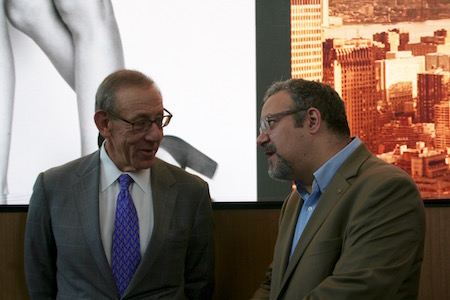
“I couldn’t be prouder of the result [of this partnership] and what it means for us,” said the company’s CEO, Victor Luis.
He added, “We have been in this neighborhood for north of 50 years, and as we celebrate this year our 75th anniversary, we’re providing our team with a fresh start in a new home — which is very open, airy, and has the most amazing views!”
Once it is completed in 2025 and stretches all the way to the West Side Highway, more than 125,000 people a day will work in, visit, or call Hudson Yards their home, according to Related.
The development will then span more than 100 shops and restaurants, including New York City’s first Neiman Marcus department store, approximately 4,000 residences, 14 acres of public open space, a new 750-seat public school, and a 200-room luxury hotel.
A study recently commissioned by the developers found that the micro-neighborhood would contribute nearly $500 million in New York City taxes every year and generate more than 55,000 jobs on the West Side.
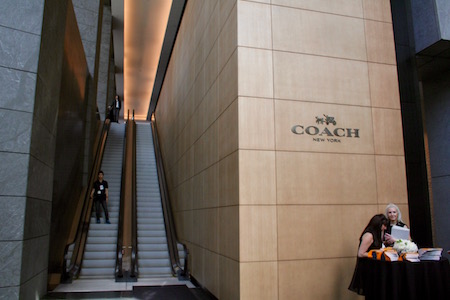
“It’s really the beginning of another city within a city,” said Luis. “We’re excited to be at the center of culture, with all that’s coming next door to us with the Culture Shed; at the center of commerce, with all our partners who will be in this and the future buildings; and to be a part of this wonderful residential community that is very fast coming up around us.”
With the project’s first phase, the Eastern Yard, scheduled to be fully open in three years, sales for the residences at 15 Hudson Yards and 35 Hudson Yards will launch later this year, according to Related.
Another office building, 55 Hudson Yards, future home to law firms Boies, Schiller & Flexner and Milbank, Tweed, Hadley & McCloy LLP, will open in 2018, together with the retail center and six-acre public plaza.
The final building, to come online in 2019, will be 30 Hudson Yards, another commercial office tower that is set to house such big-name tenants as Wells Fargo Securities, Time Warner, HBO, and CNN.
Ross emphasized how much companies like Coach, with their commitment to rent space at buildings so far only realized on paper, contribute to the project.
“Having the vision to want to develop something and coming here to make something happen,” he said. “I really have to thank Coach for the vision they had in wanting to stay here, and buying into our idea of what the next great neighborhood in the City of New York will become.”
